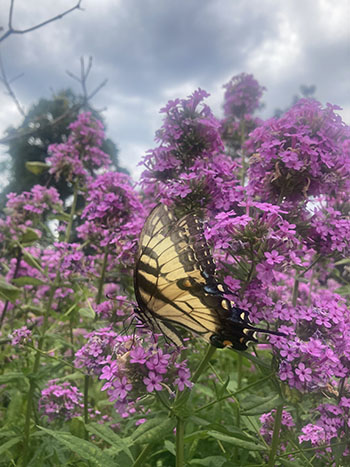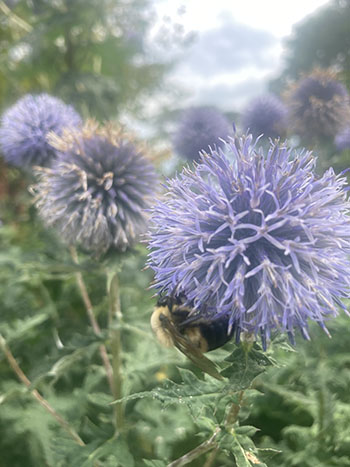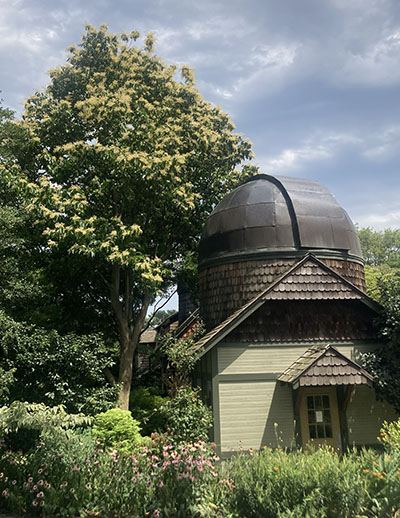
Plants of the Week: July 25
Guest Author: Summer Intern Adam Toreno

Garden phlox, Phlox paniculata ‘Jeana’ is an herbaceous perennial in the Polemoniaceae family. This cultivar has a vertical habit with thin green stems growing up to five feet high, terminating in a panicle inflorescence of small violet-pink flowers that bloom in mid to late July. ‘Jeana’ offers tremendous aesthetic and ecological value, and was even recognized by Mt. Cuba Center as the top performing variety of phlox in their trials conducted from 2015-2017. This plant is noted for its resistance to powdery mildew, and for its ability to attract pollinators such as the Eastern tiger swallowtail (Papilio glaucus, pictured above). Find Phlox paniculata ‘Jeana’ in the Dean Bond Rose Garden. photo credit: A. Torneo

Echinops bannaticus ‘Blue Glow’ is an herbaceous perennial in the Asteraceae family. With its thistly dark-green leaves and striking blue flowers in the form of miniature globes, globe thistle is a great addition to the landscape, offering color, texture and movement to the garden’s edge where it tends to perform best in full sun and nutrient-poor soils. When in full bloom, globe thistle can be seen bobbing and swaying under the weight of the numerous pollinators attracted to its silvery blue flowers. Find Echinops bannaticus ‘Blue Glow’ in the border of the Scott Entrance Garden just to the west of Cunningham house. photo credit: A. Torneo

Poliothyrsis sinensis, pearl-bloom tree, is a deciduous tree in the Salicaceae family. Also known as the pearl-bloom tree, P. sinensis is an example of a monotypic species, meaning that it is the only member of its genus. An uncommon sight in the Mid-Atlantic region, this tree is native to the mountain slopes of central China and was first introduced to U.S. gardens by E.H. Wilson, who brought its seeds to Arnold Arboretum in 1908. While an interesting tree across all seasons, the pearl-bloom tree is particularly gorgeous this time of year. When in full bloom, rich golds and subtle creamy whites cascade the tree’s luscious green foliage in soft, downturned panicles composed of the small, pearl shaped flowers that give the tree its common name. You can find three specimens of Poliothyrsis sinensis in the Scott Arboretum: one standing tall above the old observatory in the Scott Entrance Garden, and the other two beside the Wister Center service driveway. photo credit: A. Torneo





No Comments